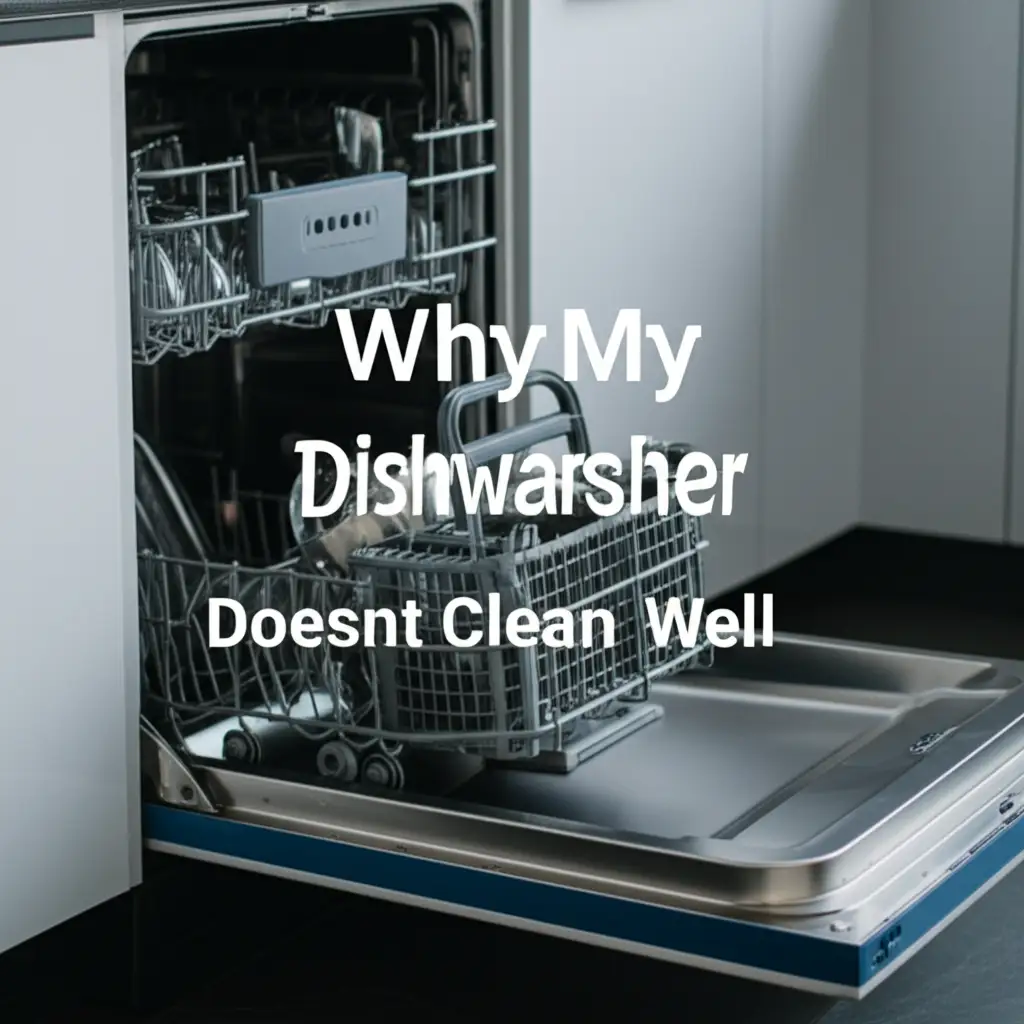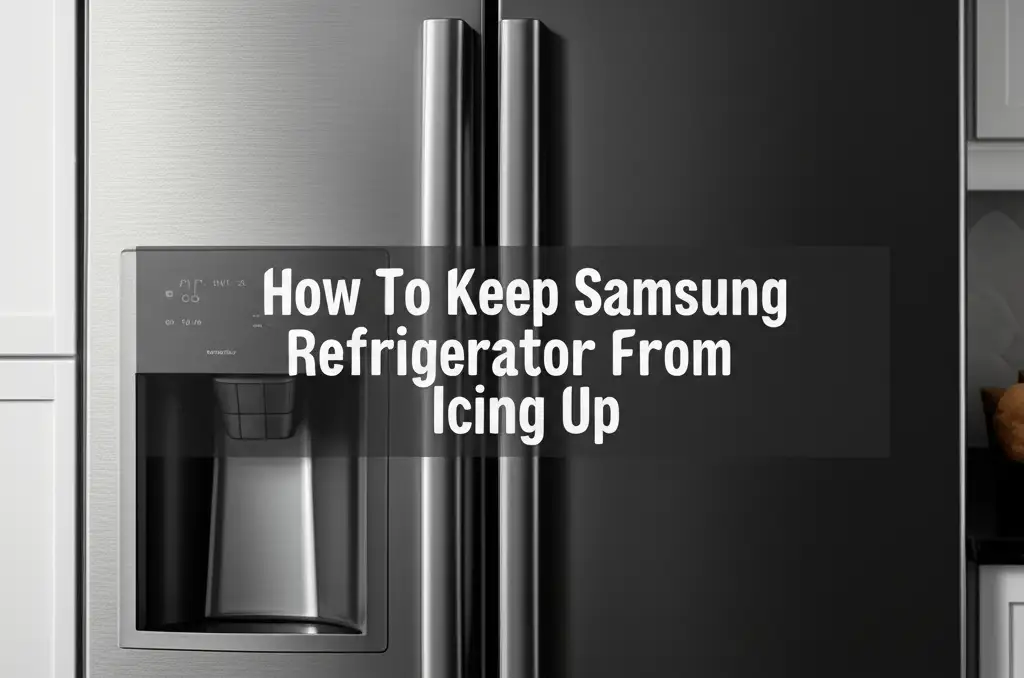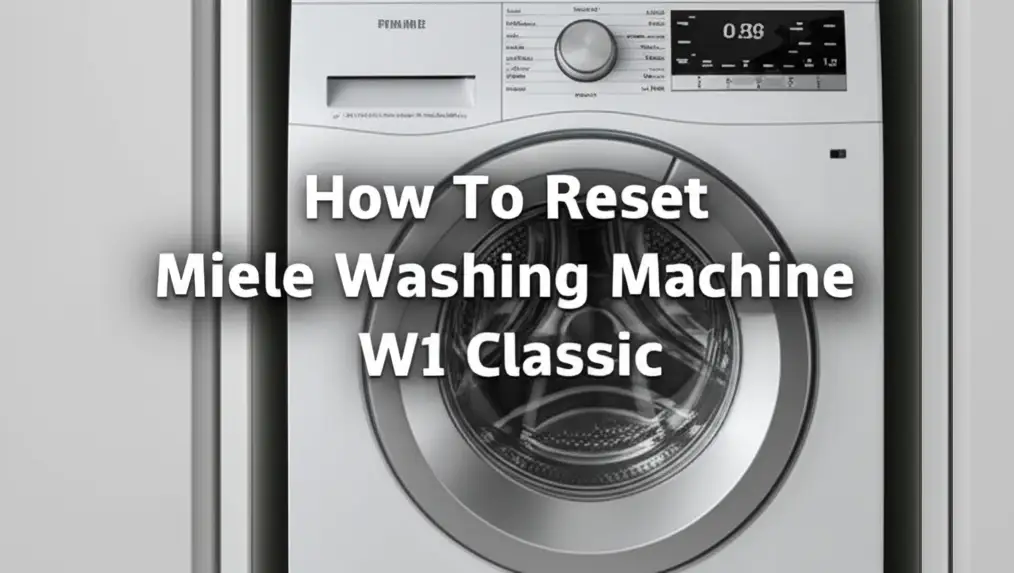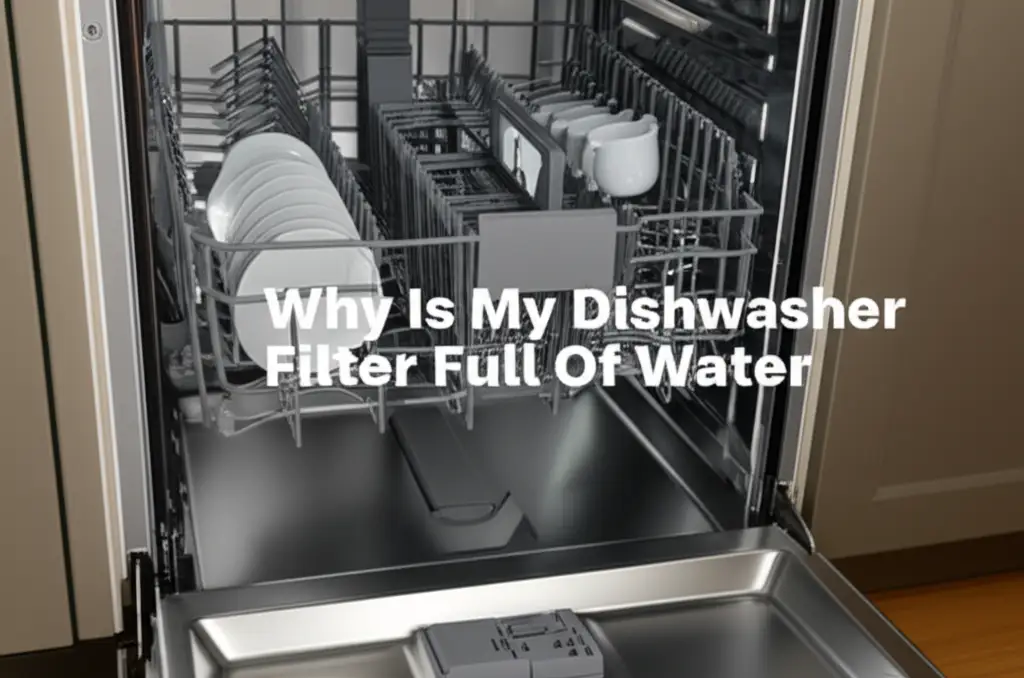· Todd Martin · Appliance Maintenance · 14 min read
Why My Dishwasher Doesnt Clean Well

Why Your Dishwasher Isn’t Cleaning Dishes Well: Fixes
You load your dirty dishes, start the dishwasher, and expect sparkling results. But sometimes, the outcome is disappointing. You pull out plates with stuck-on food, cloudy glasses, or grimy silverware. I know how frustrating this feels. A dishwasher that does not clean well adds extra work to your day. It defeats the purpose of having this convenient appliance.
This article helps you understand why your dishwasher stops cleaning effectively. We will look at common problems like clogged filters and hard water. We will also cover issues with spray arms and detergent use. By the end, you will have simple steps to troubleshoot and fix your machine. You can get your dishes clean again without needing to rewash them by hand. Let’s make your dishwasher work its best.
Takeaway
- Regularly clean your dishwasher’s filter and spray arms.
- Load dishes correctly to allow water to reach all surfaces.
- Use the right detergent and enough rinse aid for your water type.
- Ensure your water is hot enough and water pressure is good.
- Address hard water issues with special cleaners or vinegar rinses.
- Check and clear the drain and pump for blockages.
- Maintain your dishwasher often to prevent future cleaning problems.
Why does my dishwasher not clean well?
Your dishwasher may not clean well due to clogged filters, blocked spray arms, incorrect loading, low water temperature, or improper detergent use. Hard water and low water pressure also prevent effective cleaning. Regular maintenance and proper use solve most issues.
Check Your Dishwasher Filters and Spray Arms
A dirty filter is a common reason why a dishwasher does not clean well. Food particles, grease, and debris collect in the filter over time. This blockage stops water from flowing freely. When water cannot flow well, it cannot clean your dishes properly. You might see food residue on your plates after a wash cycle.
Cleaning the filter is simple but important. Most dishwashers have a removable filter at the bottom. You can usually twist it out by hand. Rinse it under running water to remove all debris. You can use a soft brush for stubborn bits. I try to clean mine once a month. For more detailed instructions, learn how to clean filter in dishwasher. Knowing how often should you clean your dishwasher filter helps keep your machine running well.
Blocked spray arms also cause poor cleaning. The spray arms have small holes that spray water onto your dishes. Food bits, mineral deposits, or even tiny labels from jars can clog these holes. When holes are blocked, water pressure drops, and water does not reach all dishes. This leaves spots or food on your plates.
You can check your spray arms by hand. Spin them to make sure they turn freely. Look closely at the spray holes for any blockages. Use a small wire or toothpick to clear any clogs. Sometimes, you might need to remove the spray arms for a more thorough cleaning. Knowing how to clean the inside of a dishwasher includes checking these parts. Clear spray arms ensure water sprays everywhere it should. This step helps your dishwasher clean every item.
Load Dishes Right and Use Good Detergent
How you load your dishwasher makes a big difference in how well it cleans. Overloading is a common mistake. When you put too many dishes inside, water and detergent cannot reach all surfaces. Dishes block the spray from reaching others. This leaves food stuck on plates or spots on glasses. Give each dish space to breathe.
Place larger items like platters or bowls on the bottom rack. Face their dirty surfaces toward the spray arms. Cups and glasses go upside down on the top rack. Do not nest items together. Spoons should go handle down in the cutlery basket, while forks and knives go handle up. This prevents spoons from “spooning” and collecting water. For comprehensive loading tips, you can learn how to use dishwasher properly.
The type and amount of detergent you use are also important. Not all detergents are the same. Some work better with certain water types. Use automatic dishwasher detergent only. Never use dish soap meant for handwashing. It creates too many suds and can damage your machine. Use the recommended amount of detergent. Too little detergent will not clean well. Too much can leave a film on dishes.
Rinse aid helps water drain off dishes. This prevents water spots and streaks, especially in areas with hard water. Fill the rinse aid dispenser regularly. If you do not use enough rinse aid, your glasses may come out cloudy. While dishwasher liquid is a type of detergent, ensure it is specifically for automatic dishwashers. Consider a deep clean a dishwasher periodically to remove any detergent residue buildup that might affect performance. Using the right products in the right way improves cleaning.
Verify Water Temperature and Pressure
Your dishwasher needs hot water to clean dishes well. Hot water helps dissolve detergent more effectively. It also helps break down grease and food particles. Most dishwashers need water to be around 120 degrees Fahrenheit (49 degrees Celsius) for best results. If your water heater is set too low, your dishes might not get clean.
You can check your hot water temperature at the kitchen faucet. Turn on the hot water and let it run for a few minutes. Use a thermometer to measure the temperature. If it is too low, adjust your water heater settings. Be careful not to set it too high, as this can be a scalding hazard. Also, avoid running other hot water appliances, like your shower, while the dishwasher is running. This ensures the dishwasher gets a consistent supply of hot water. Regular maintenance, such as performing how to clean dishwasher at home tasks, sometimes involves checking water inlet systems.
Low water pressure can also cause poor cleaning. The spray arms need good water pressure to spray water forcefully onto dishes. If water pressure is weak, the spray might not reach all parts of the dishwasher. This leaves dirty spots on your dishes. Low water pressure can be a household issue. It can also be specific to the dishwasher’s water inlet valve.
You can test your water pressure by running your faucet. If the flow seems weak, check other faucets in your home. This helps determine if the issue is with your main water supply or just the dishwasher. Sometimes, a kinked water inlet hose behind the dishwasher causes low pressure. Ensure the hose is straight and clear. A clogged dishwasher drain or pump can also indirectly affect water flow inside the machine. Learn how to clean dishwasher drain to ensure water flow is not hampered by drain issues. Proper water flow is vital for spotless dishes.
Address Hard Water Mineral Buildup
Hard water contains high levels of minerals like calcium and magnesium. These minerals leave white spots or a cloudy film on your dishes and glassware. This is often called limescale. Hard water can also build up inside your dishwasher over time. This buildup coats internal components, including heating elements and spray arms. It reduces their effectiveness.
Mineral buildup stops your dishwasher from cleaning well. The detergent cannot work as effectively in hard water. The minerals also leave deposits that look like dirt, even if the dishes are clean. You might notice your machine smells bad sometimes too, which can be a sign of buildup. A good way to prevent this is by using a rinse aid. Rinse aid helps water sheet off dishes, preventing spots. Many rinse aids also have ingredients that fight hard water.
You can use household items to combat hard water buildup. White vinegar is excellent for this. Run an empty cycle with a cup of white vinegar placed in a bowl on the bottom rack. The vinegar helps dissolve mineral deposits and brightens your dishes. I find this method works really well. You can learn how to clean dishwasher with vinegar for detailed steps. Knowing where to put vinegar in dishwasher to clean ensures you use it effectively.
Special dishwasher cleaners are also available. These cleaners often contain stronger agents designed to break down tough mineral buildup and grease. Use them once a month or every few months, depending on how hard your water is. If your dishwasher has a persistent bad smell, it could be due to hard water and food residue. Addressing the hard water helps clean a smelly dishwasher and improves cleaning performance overall. Fighting hard water makes a noticeable difference.
Clear Dishwasher Drain and Pump Issues
Your dishwasher relies on a clear drain to remove dirty water. If the drain is blocked, dirty water stays in the tub. This water then redeposits food particles onto your “clean” dishes. You might see standing water at the bottom of the dishwasher after a cycle. A clogged drain hose or a blocked drain filter causes this. Food debris, grease, or even small objects can create these blockages.
Checking the drain is an important step in troubleshooting. First, make sure your dishwasher is off. Remove the bottom dish rack and look into the drain area. Clear any visible food scraps. You might need to disconnect the drain hose from the sink or garbage disposal to check for blockages. Many resources show how to clean dishwasher drain effectively. Ensuring the drain hose is not kinked behind the appliance also helps.
The dishwasher’s pump moves water during cycles and pushes it out for drainage. If the pump is not working properly, water circulation inside the machine will suffer. This directly affects cleaning power. A faulty pump also stops the dishwasher from draining completely. You might hear strange noises coming from the pump area. Sometimes, food debris gets caught in the pump impeller, stopping it from spinning.
Clearing the pump requires more effort than cleaning the filter. You will need to access the pump area at the bottom of the dishwasher tub. Remove any covers or screens blocking the pump impeller. Carefully remove any visible blockages. This can often solve issues where dishes are not clean and water remains. For detailed instructions on clearing this component, learn how to clean dishwasher pump. If your dishwasher does not drain well, understanding how to get the dishwasher to drain can resolve standing water issues. A clear drain and functional pump are essential for clean dishes.
Check Soap Dispenser and Air Gap Problems
The soap dispenser is a key part of your dishwasher’s cleaning process. It holds the detergent and releases it at the correct time during the wash cycle. If the dispenser does not open properly, the detergent will not reach your dishes. This means your dishes will not get clean. Common reasons for a dispenser failure include being blocked by a dish or a faulty latch. Sometimes, the dispenser gets sticky from old detergent residue.
To check the dispenser, open the dishwasher door after it has run a cycle. See if the dispenser door is open. If it is closed, something stopped it from opening. Make sure no large dish or utensil blocks the dispenser door. Clean the dispenser thoroughly. Use a damp cloth to wipe away any sticky buildup. This ensures the door can open freely. Include this check when you clean dishwasher at home.
Many dishwashers also have an air gap. This is a small, cylindrical device usually found on your kitchen counter near the faucet. It prevents dirty dishwasher water from flowing back into your fresh water supply. While important for health, the air gap can sometimes get clogged. Food particles can build up inside it. A clogged air gap can prevent your dishwasher from filling or draining correctly. This leads to dirty dishes or standing water.
You can check an air gap for clogs. Unscrew its cap on the counter. Remove the inner plastic cylinder. Inspect it for any visible debris. Clear out any blockages. Rinse the parts under running water. Reassemble the air gap. If the problem persists, the hoses connected to the air gap might be clogged. A thorough deep clean a dishwasher might involve checking all these interconnected components. Ensuring the dispenser and air gap work correctly helps your dishwasher deliver clean dishes every time.
Regular Dishwasher Maintenance Prevents Poor Cleaning
Proper and regular maintenance helps your dishwasher clean well for many years. Neglecting your machine leads to poor performance. Just like any appliance, a dishwasher needs care. You can avoid many common cleaning problems with a simple routine. This routine involves checking key parts and using good practices.
Start by making filter cleaning a habit. I clean my dishwasher filter once a month. This prevents food particles from building up and blocking water flow. You can use a soft brush and warm water. For more details, refer to how to clean your dishwasher DIY. This simple step saves a lot of headaches. Knowing how often should you clean your dishwasher filter is key to consistent performance.
Beyond the filter, clean the entire interior of the dishwasher. Food can stick to the walls, bottom, and around the door seal. This leads to foul odors and reduces cleaning power. Wipe down these surfaces with a damp cloth. You can also run an empty cycle with a dishwasher cleaner or white vinegar to remove grime and mineral buildup. This helps keep the spray arms clear and the machine fresh. Regularly cleaning the interior is part of keeping your dishes sparkling. Learn how to clean the inside of a dishwasher for a spotless appliance.
Check the spray arms regularly for clogged holes. Use a toothpick to clear any debris. Ensure they spin freely. Also, check the detergent dispenser for any sticky residue. Wipe it clean so it opens correctly every time. If you have hard water, use a rinse aid and consider periodic vinegar rinses. These proactive steps keep your dishwasher efficient. They prevent future problems. Regular care ensures your dishwasher cleans every load effectively.
FAQ Section
Why are my dishes still dirty after a dishwasher cycle?
Your dishes are still dirty likely due to clogged filters or spray arms. Incorrect loading can also block water from reaching all surfaces. Other reasons include low water temperature, too little detergent, or hard water leaving mineral spots. Check these common issues first.
How often should I clean my dishwasher filter?
You should clean your dishwasher filter about once a month. If you run your dishwasher often or pre-rinse dishes, you might need to clean it more frequently. Regular cleaning prevents food buildup and keeps your dishwasher cleaning well.
Can hard water affect my dishwasher’s cleaning performance?
Yes, hard water can greatly affect cleaning performance. Minerals in hard water leave white spots and cloudy film on dishes. They also build up inside the dishwasher, reducing its efficiency. Use rinse aid and run vinegar cycles to combat hard water effects.
What kind of detergent should I use for my dishwasher?
Always use automatic dishwasher detergent. This can be in powder, gel, or pod form. Never use hand dish soap, as it creates too many suds and can damage your machine. Check your dishwasher manual for specific detergent recommendations.
Why do my dishwasher’s spray arms seem weak?
Weak spray arms often point to low water pressure. This can be from a clogged water inlet valve or a kinked water hose. Clogged spray arm holes also reduce pressure. Make sure the holes are clear and that your home has sufficient water pressure.
How can I make my dishwasher smell better?
A bad smell often comes from food debris and grease buildup inside the dishwasher. Clean the filter, spray arms, and interior seals thoroughly. Run an empty cycle with white vinegar or a dishwasher cleaner. This removes odor-causing residue.
Conclusion
It is frustrating when your dishwasher does not clean well. But now you understand many common reasons for this problem. You know how to troubleshoot and fix them. From clogged filters to hard water, each issue has a straightforward solution. You can restore your dishwasher’s power.
Remember to regularly clean the filter and clear the spray arms. Load your dishes correctly to allow proper water flow. Ensure your water is hot enough and your detergent is right for your needs. Address hard water issues with rinse aid or vinegar rinses. Do not forget to check the drain, pump, and soap dispenser for blockages. Taking these simple steps makes a big difference.
Consistent maintenance keeps your dishwasher running its best. You will enjoy sparkling clean dishes every time. Do not let dirty dishes pile up because of a poor-performing machine. Take action today. Start with a quick check of your dishwasher’s filter and spray arms. Get your dishes clean again and simplify your kitchen routine.





